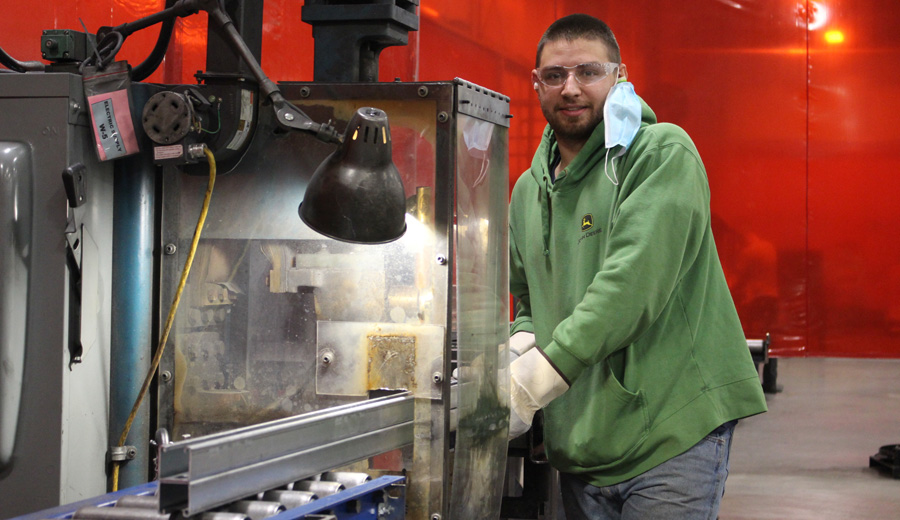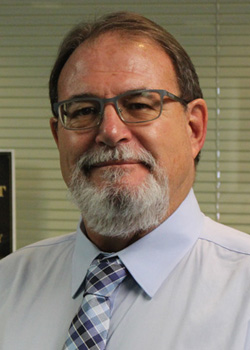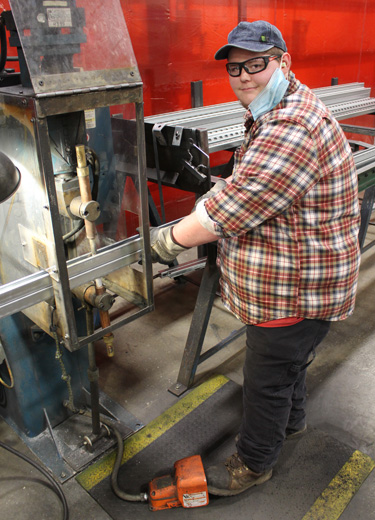YOUNGSTOWN, Ohio – Hiring is tough for employers, pandemic or no.
But workforce development boards are helping Ohio companies to save time and money by identifying what businesses need and ensuring that individuals get the training they need.
All 38 employees at Quality Switch Inc. in Newton Falls have benefited from training through the Workforce Development Board of Trumbull County, says CEO Russ Sewell, including himself. After an expansion in 2010, Quality Switch went through the board to hire eight workers and took advantage of its on-the-job training program, which reimburses employers up to half of a new employee’s salary for up to six months..
That year, the program saved Quality Switch some $20,000, Sewell says.
“For a small business, that helps a lot,” Sewell says. “Because you have to train them and you’ve got to pay them while you do it.”
About 20 of his current workers have taken part in the on-the-job training, or OJT program, he says. On average, three or four Quality Switch employees are enrolled in a board program annually.
The boards oversee the policies and strategic direction of the programs, which are federally funded through the Workforce Innovation and Opportunity Act. Programs are carried out through the state One-Stop system, including the OhioMeansJobs centers and other training organizations such as the Mahoning and Columbiana Training Association, which also help with the paperwork.
“The people you deal with, they know how to simplify it,” Sewell says. “It’s huge for us. As business owners, our time is limited. We’ve got to focus on stuff that’s going to make our business more productive.”
Likewise, OJT training through the Workforce Development Board Inc. of Mahoning and Columbiana Counties has been a huge benefit for PHD Manufacturing in Columbiana, says Deann Davis, its human resources director. The company currently has seven workers in the program, individuals PHD “normally wouldn’t have considered hiring because they didn’t have the necessary skills,” she says.
“This way we’re getting partial reimbursement for their wages in exchange for training them in how to go down a career path,” Davis says. For a press operator making $14 hourly, that can equate to $7,280 in savings for the company after the six months.

Over the years, PHD has used the program for about 25 of its workers, she says.
“It gives people the opportunity to improve their wage rate,” Davis says. “They could have been coming from a minimum wage job. And now they’re making $14 an hour with health insurance, paid time off. Most of those people have never had benefits before.”
Both Sewell and Davis are members of their respective workforce development boards. Davis has served as chairwoman of the Mahoning and Columbiana Counties board since 2009. Per the Workforce Innovation and Opportunity Act, or WIOA, boards must be at least 51% composed of business owners.
“They want those boards employer-led,” says Bert Cene, director of the Workforce Development Board Inc. of Mahoning and Columbiana Counties. “And so all of the officers on our board – which is the chair, vice chair and secretary – are all from private sector employers.”
The makeup of the boards is largely the same from when the WIOA took effect in July 2015, replacing the Workforce Investment Act of 1998.

Professionals in business, workforce and labor, education and training, and government, economic and community development comprise the boards, which are divided into committees: executive, One-Stop, individuals with disabilities, planning and monitoring, bylaws and youth committees.
The varied makeup of the board breeds collaboration, which is key to its success, Cene says. Because the programs are federally funded, they can cross county and state lines for partnerships, he says.
The two area boards work together, as well as with employers and educational institutions to put programs in place. They’re both part of the statewide Business Resource Network and have collaborated with regional entities, such as the Tri-State Energy and Advanced Manufacturing Consortium, or TEAM, and the Oh-Penn Interstate Region.
“No one entity can solve these issues,” Cene says. “We’ve expanded our partnerships, our footprint, in a lot of different ways over the years. We’re proud of that.”
In addition to OJT training, board offerings include short- and long-term training through the One-Stops and MCTA, such as soft skills, as well as tuition reimbursement of up to $9,500 annually for two years. Assistance for schooling can include support services for other needs, such as uniforms and testing fees for nursing students, as an example.
Before the pandemic, the board saw the most need coming from manufacturing, particularly machinists, welders, mechanics and electricians, Cene says. Now, demand for truck drivers is up, as well as for retail employees, he says.
In Trumbull County, board Director William Turner has seen an uptick in demand for truck drivers too, as well as nurses and aviation maintenance technicians, the latter of which is “a bit of a surprise,” he says.

Turner believes the greater need for truck drivers and aviation maintenance are interrelated and “a sign of an uptick in the economy,” he says.
“Of course, [aviation maintenance technicians] aren’t going to work in the direct area. But they’re going to work in Akron, Pittsburgh, Cleveland or smaller airfields. So it’s a commutable distance,” he says.
Many individuals are seeking their commercial driver’s license because it’s a relatively short training program and “they can get to work right away,” says Mary Ann Kochalko, MCTA chief operating officer.
And despite COVID-19, there is still a lot of interest in health care and nursing because there’s a good chance of being hired after graduation, she says.
“That’s been a constant through the years,” Kochalko says. “It’s a health care town. We have good relationships with the health care training providers in the area.”
Overall, OJT training is down about 12% from last year, “which really doesn’t surprise us given the situation with COVID-19,” Kochalko says. Classroom training, however, is up 10%. “Usually when the economy gets a little rough, many people turn to the classroom” because they don’t have a chance to get in-person training, she says.
That said, spending on tuition assistance is down “a couple hundred-thousand dollars” from last year in Mahoning and Columbiana counties because schools have curtailed operations during the pandemic, Cene notes.
The boards continue to find ways to engage high school students through the efforts of their youth committees, Turner says. They promote everything from training to summer work opportunities. And they are looking at incorporating pre-apprenticeships to prepare students for alternatives to college, he says.
Some of the students go into the jobs they’re training for, although “quite a few are looking for more training or college,” Turner says. “We try to give them an idea of what they want to go into, and hopefully help guide them that way.”
While most youth stay local, the ability to attract and retain young workers hinges on opportunity and job growth within a commutable distance of the area, he notes.
“People are going to go where the activity is,” Turner says. “We try to keep them local and we try to base the job growth locally.”
Part of that is anticipating popular jobs for the future, Turner says. “You don’t just work in the present. You work ahead of yourself.”

Turner is enthusiastic about economic growth he’s seeing, particularly in the Lordstown area. The Trumbull County board is preparing to train the workers to fill those forthcoming jobs, as well as in any spinoff industries.
The challenge, he says, is ensuring employers and job seekers know to leverage the resources the workforce development boards offer, he says. To market itself, the board is doing more with digital and social media.
“Not all jobs stand there and wave their arms at you and say, ‘Hey, come see me,’ ” Turner says. He encourages residents to come in and investigate what’s available. “You may find that there are careers that maybe you didn’t think of that you might want to pursue. And that’s the first step in getting it going,” he says.
Just as COVID-19 has affected workforce needs among businesses, it’s forced workforce development boards to adapt. Members are working with the state to get better data on how many employers have been affected by the pandemic and to what level, Cene says.
“We know when an employer shuts down,” he says. “Through the WARN notices, we know the big ones. But we don’t know specifically, in some cases, if employers are back at 100%, if they’re back at 50%. What’s their intention going into 2021?”
That information would help the board to target more closely where they need to move their training, and what areas they need to move it into, Cene says.
It will also show which businesses found opportunities during the pandemic and which were faced with struggles so training centers can better address assistance with recruitment, MCTA’s Kochalko adds.
“That data isn’t in the labor market yet. We’re trying to do that in real time,” she says.
Once the pandemic lifts, boards expect some businesses will maintain virtual services, changing the landscape of work, Cene says. That will result in a change in curriculum as virtual skills might replace some skills people working virtually won’t need anymore, he says.
“We don’t know what those are yet,” he says. “This is all speculation. But this all goes into our planning process as we look forward post-COVID.”
Pictured at top: PHD Manufacturing, Columbiana, has enrolled about 25 of its employees in the OJT program through the workforce development board, says Deann Davis.
